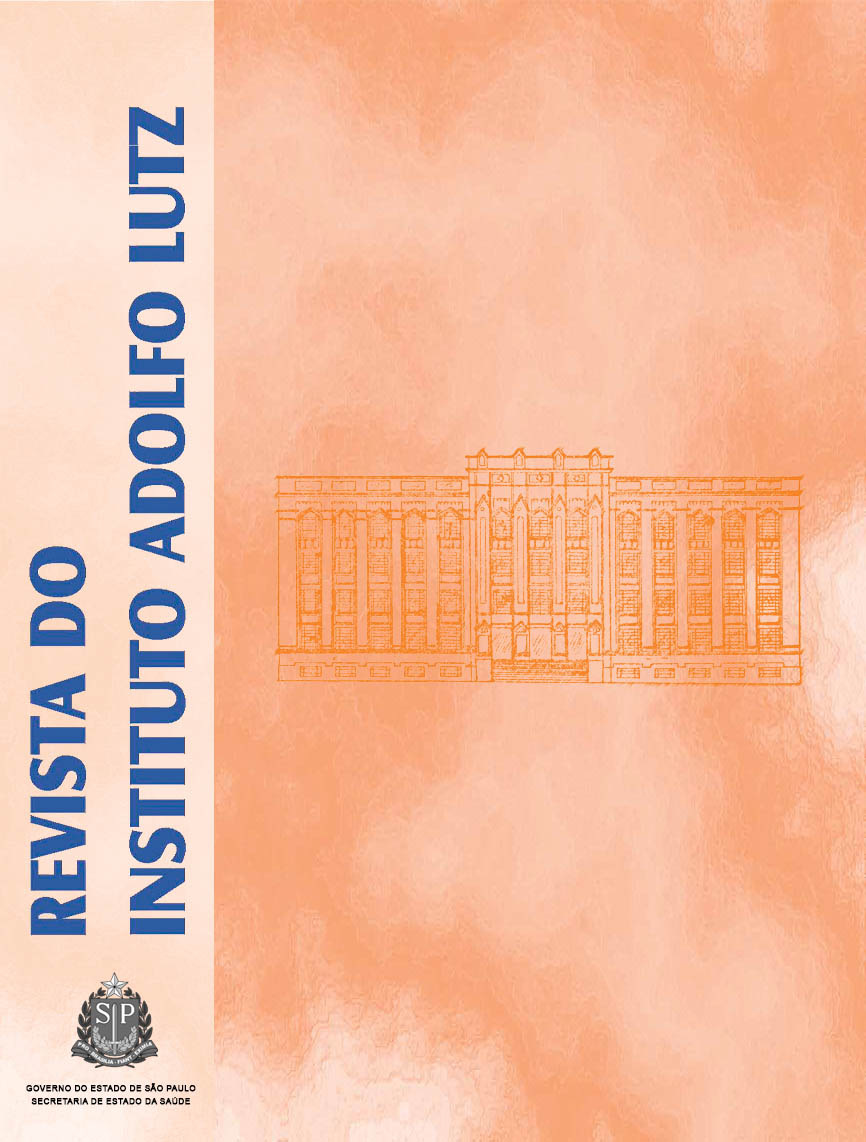Abstract
The effect of gamma-irradiation in doses ranging from 0 to 30 kGy was verified in order to inactivate aflatoxin B1 in peanuts sample. Peanut samples of Tatu Vermelho cultivar 2001/2002 and 2002/2003 crops,cultivated in São Paulo state, naturally or experimentally contaminated with aflatoxin B1 at varied contents, were investigated. Aflatoxin B1 was extracted with methanol:4% potassium chloride moisture (270 + 30, v/ v) followed by clarification with 10% cupric sulfate and partition with chloroform. Aflatoxin quantification was done by means of thin layer chromatography, measuring the samples and the standard fluorescent areas on densitometer at 366 nm. Gamma-irradiation (60Co) at doses of 1.5 and 10 kGy reduced the aflatoxin B1 contents in around 20% in samples experimentally contaminated with 55.3, 105.8, and 159.3 µg.kg-1. In naturally contaminated peanut samples containing 84.0 µg.kg-1 and 258.3 µg.kg-1 of aflatoxin B1 ,and treated with gamma-irradiation (60Co) at 5 and 10 kGy doses, no reduction of aflatoxin B1 levels was evidenced. On the other hand, samples naturally contaminated with aflatoxin B1 (86.0 and 248.0 µg.kg-1) and irradiated with 15, 20, 25 and 30 kGy doses, showed lower values of aflatoxin B1, ranging from 49 to 72%. In conclusion, no total inactivation of aflatoxin B1 occurs by means gamma-irradiation (60Co) in natural conditions, even at 30 kGy dose.References
1. Council for Agricultural Science and Technology - CAST. Mycotoxins: economics and health risks. Ames, Iowa: Council for Agricultural Science and Tecnology, 2003. Task Force Report 139.
2. Bhat RV. Mould deterioration of agricultural commodities during transit: problems faced by developing countries. Int J Food Microbiol 1988;7: 219-25.
3. Rodriguez-Amaya B, Sabino M. Mycotoxin research in Brazil: Thelast decade in review. Braz J Microbiol 2002; 33: 1-14.
4. Hernandes NK, Vital HC, Sabaa-Srur UO. Irradiação de alimentos: vantagens e limitações. Bol SBCTA 2003; 37: 154-9.
5. Verruma-Bernardi MR, Spoto MHF. Efeito da radiação gama sobre operfil sensorial de suco de laranja. Ciênc Tecnol Aliment 2003; 23:28-32.
6. Worcman-Barninka D, Landgraf M. Irradiação de carnes. Bol SBCTA2003; 37: 22-7.
7. Del Mastro NL. Alimentos esterilizados para uso em hospitais e rações alimentares. Rev BrasPes Des 1999; 2: 4.
8. Giroux M, Lacroix M. Nutritional adequacy of irradiated meat - areview. Food Res Int 1998; 31: 257-64.
9. Brasil. Agência Nacional de Vigilância Sanitária. Resolução nº 21, de 26 de janeiro de 2001. Aprova o regulamento para irradiação de alimentos. Diário Oficial [da] República Federativa do Brasil, Brasília, 29 jan. 2001.
10. Association of Official Analytical Chemists. Official Methods of the AOAC International. 16. ed. Gaithersburg: AOAC International, 1997.
11. Valente Soares LM, Rodriguez-Amaya DB. Survey of aflatoxins, ochratoxins A, zearalenone, and sterigmatoystin in some brazilianfoods by using multi-toxin thin-layer chromatographic method. J Assoc Off Anal Chem 1989; 72: 22-5.
12. Gimeno A. Thin layer chromatographic determination of aflatoxins, ochratoxins, sterigmatocystin, zearalenone, citrinin, T-2 toxin,diacetoxyscirpenol, penicillic acid, patulin and penitrem A. J AssocOff Anal Chem 1979; 62: 579-85.
13. Sampaio MBI. Estatística aplicada à experimentação animal . BeloHorizonte: Fundação de Ensino e Pesquisa em Medicina Veterinária eZootecnia, 1998. 221 p.
14. SAS Institute.Users guide: statistics. 1989-1996. Version 6.11. Systemfor Windows. Edition. Cary North Carolina, 1996.
15. Ferreira DF. Sistema de análise estatística – SISVAR. Lavras: UFLA,2000.
16. Samarajeewa U, Sen AC, Cohen MD, Wei CI. Detoxification ofaflatoxins in foods an feeds by physical and chemical methods. J FoodProt 1990; 53: 489-01.
17. Aziz NH, Youssef BM. Inactivation of naturally occurring ofmycotoxins in some egyptian foods a and agricultural commodities bygamma irradiation. Egypt J Food Sci 2002; 30: 167-77.
18. Rela PR. Cresce uso de irradiação para conservação de alimentos. Rev Eng Alim 2000; 29: 26-9.
19. Landgraf M. Controle do desenvolvimento microbiano nos alimentos.In: Melo Franco BDG, Landraf M. Microbiologia dos alimentos. São Paulo: Ed Atheneu; 2003. p. 109-48.
20. Azeredo GA, Bruno RLA, Souza AP, Silva A, Bruno GB, Queiroga VP. Qualidade fisiológica de sementes armazenadas de amendoim. Rev.Ceres 2003; 50: 127-41.
21. Fagundes MH. Sementes de amendoim: alguns comentários. 2002(acesso em: 6 maio 2004). Disponível em:<http://www.conab.gov.br>..
22. Chiou RYY, Lin CM, Shyu SL. Property characterization of peanutkernels subjected to gamma irradiation and its effect on the outgrowthand aflatoxin production by Aspergillus parasiticus. J Food Sci 1990;55: 210-3.

This work is licensed under a Creative Commons Attribution 4.0 International License.
Copyright (c) 2005 Instituto Adolfo Lutz Journal
